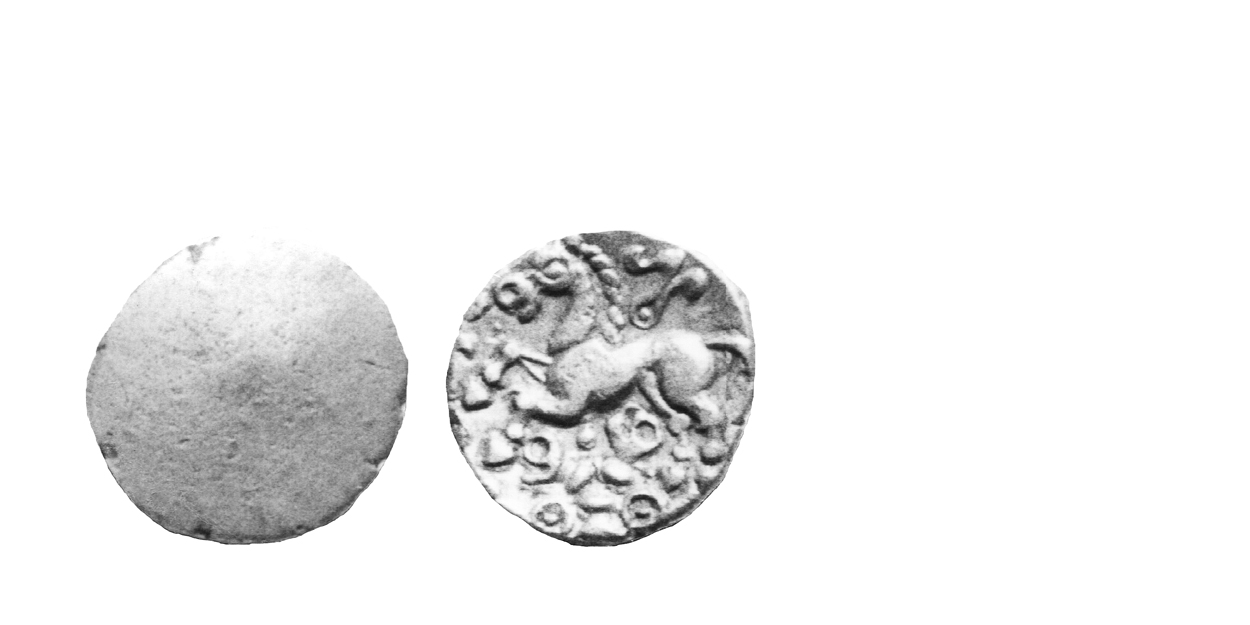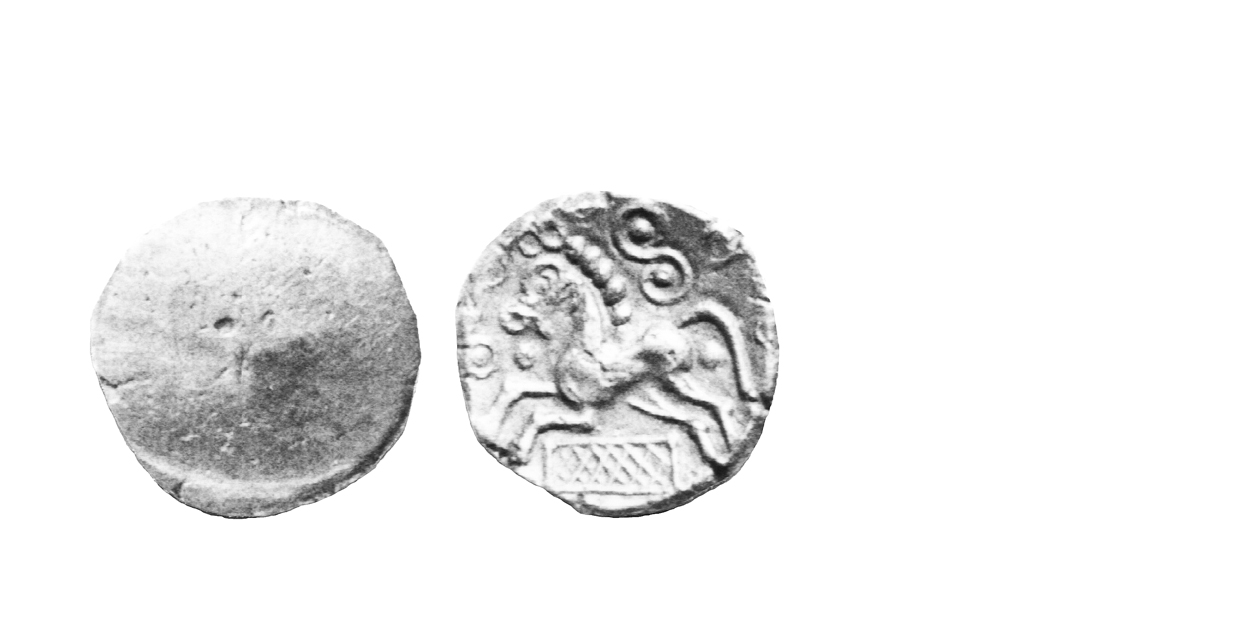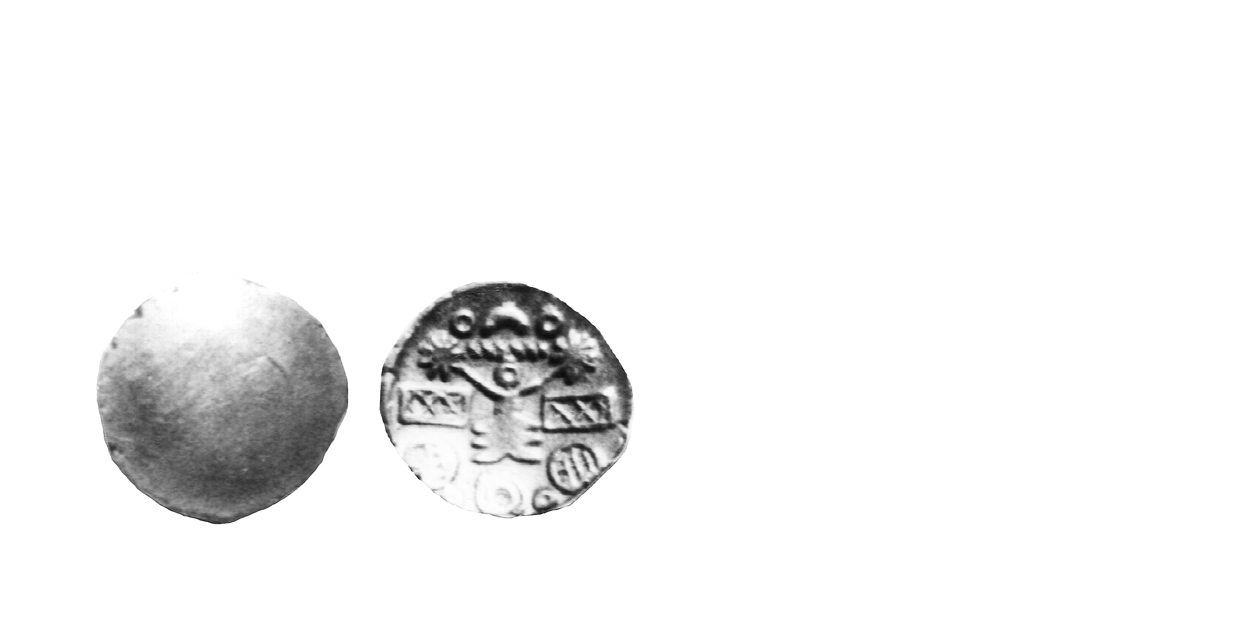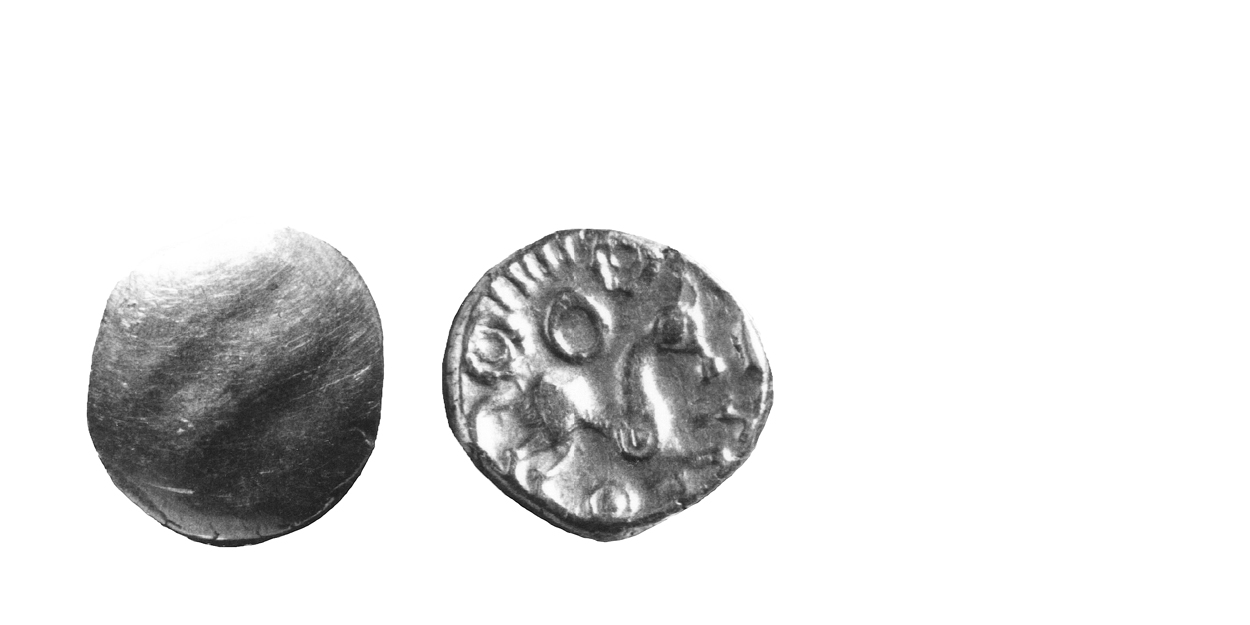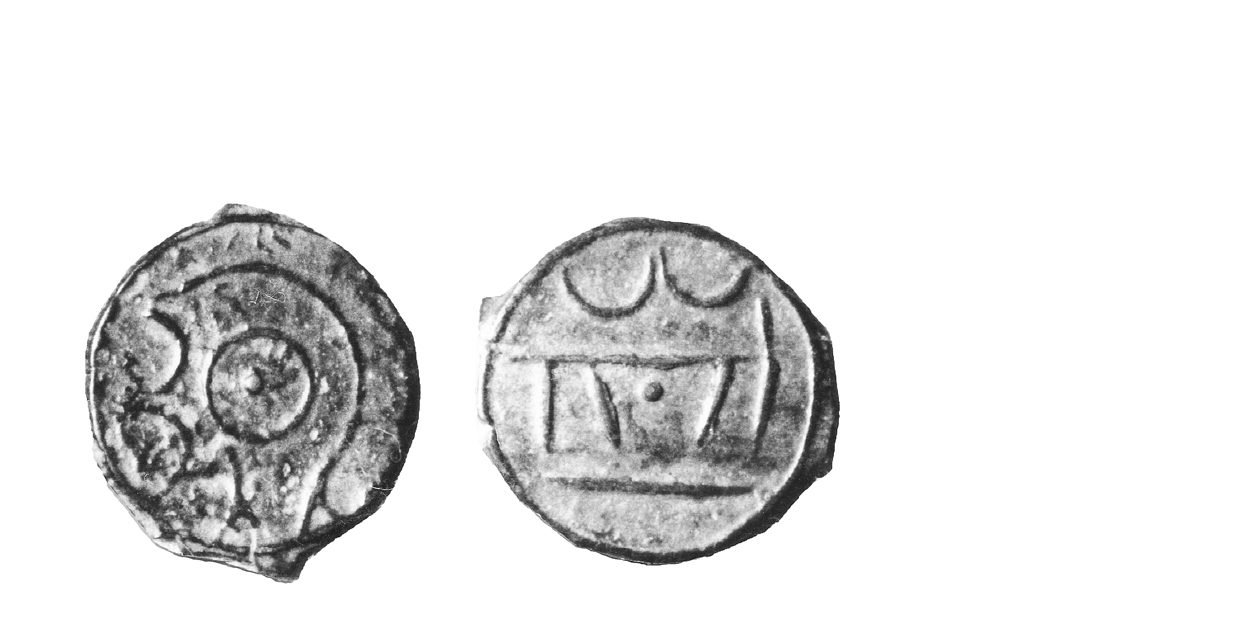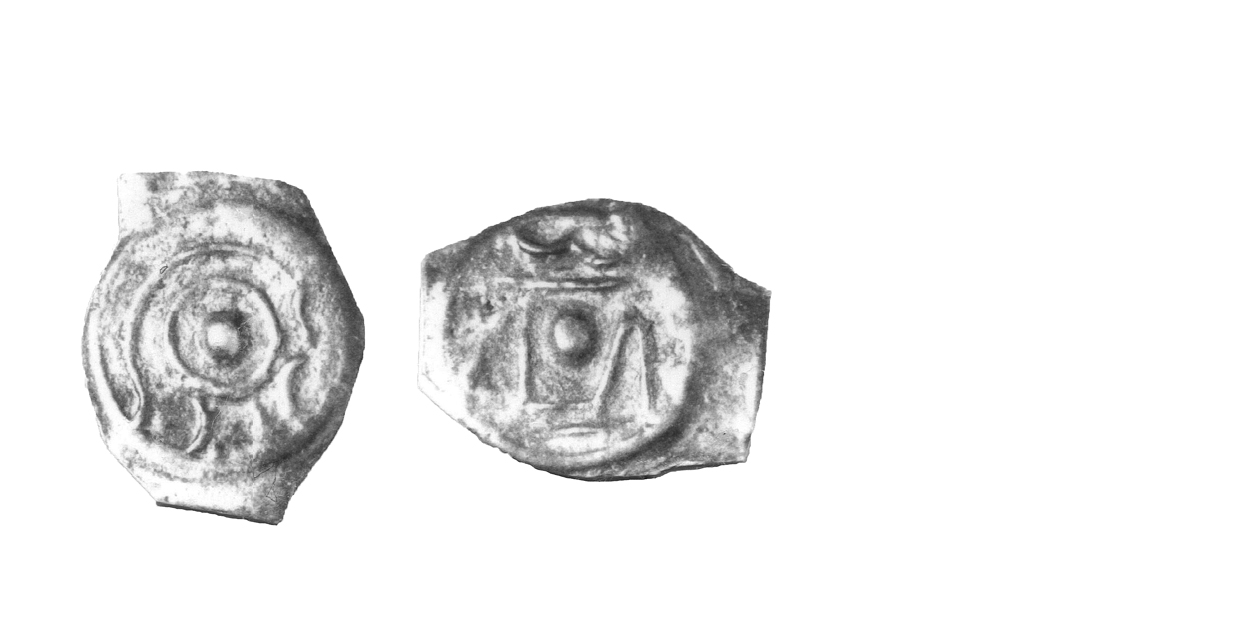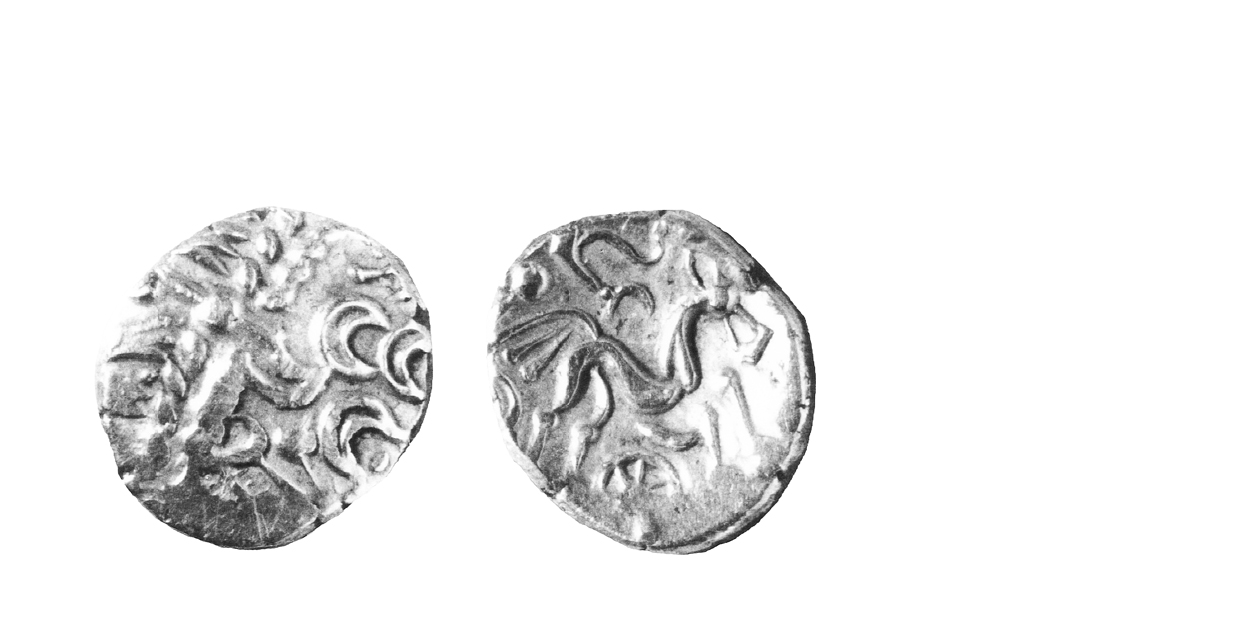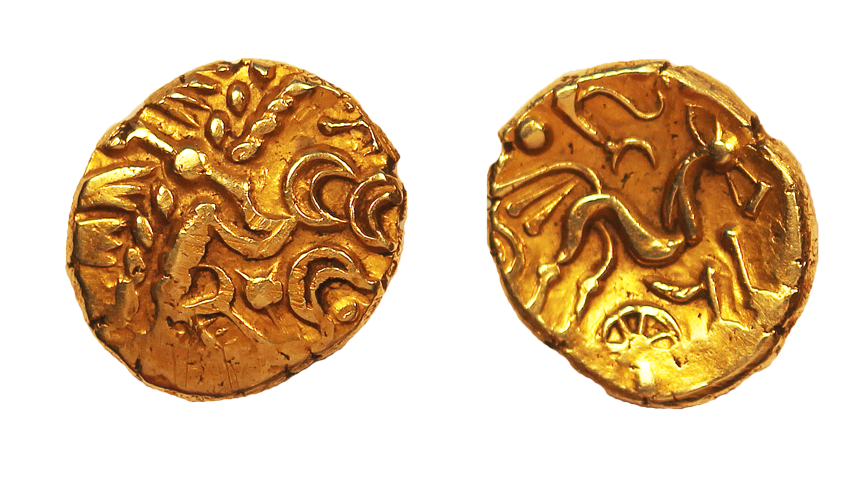
History
Last Uninscribed Coinages (Info)
Coinage in the South Thames Region 54-30 B.C.
The two tribes occupying the South Thames Region, the Cantii in the east and the Atrebates/Regni/Belgae to the west, both had sophisticated money economies before the Gallic War.
Though the Cantii had manufactured their own bronzes for fifty years, they traditionally satisfied their need for gold coins by importing them from Gaul. By the war's end, they found themselves cut off from their Continental sources and were forced to strike their own. About 50 B.C., they introduced the Ornamented Type stater. Within five years, these were superseded by the lower-weight Weald Type and its quarter, the Trophy Type. The dynastic coinage began around 35 B.C., and the first inscription, not fully visible on existing coins, appears to contain the letters IVII (55). By 30 B.C this coinage was replaced by coins in the name of Dubnovellaunus-in-Kent (56).
During this period, the tribe changed the module of the cast bronze coins as well, to make them smaller in diameter, but thicker. The change was evidently necessitated by some production difficulties with the thinner, but large-diameter Optimization Period coins. The resulting Adjustment Period coins were produced in fairly small quantities. Soon, a manufacturing change was again instituted – casting was suspended, and struck bronzes were introduced. The cast bronzes were superseded, around 35 B.C., by the dynastic issues, first uninscribed coins under the ruler whose full name is not known, followed by inscribed issues of Dubnovellaunus-in-Kent (57).
The Atrebates/Regni/Belgae continued to issue the Atrebatic Abstract Type after the war, the quarters of which were struck in a very wide variety of designs. However, the appearance of Commius in Britain forever changed the complexion of British coinage.
By 45 B.C., the Atrebates/Regni/Belgae were striking a variant of the earlier staters, but now carrying a legend on the reverse, below the horse. The name COMMIOS appears on what was to be not only the first inscribed British coin but the first to carry the name of a ruler. A silver coinage was added to the Atrebatic/Regnan/Belgic issues, coins too small to accommodate Commius's name, but identified by a privy mark which, has been attributed to him (58).
Next Section – Last Uninscribed Coinages Peripheral Region

